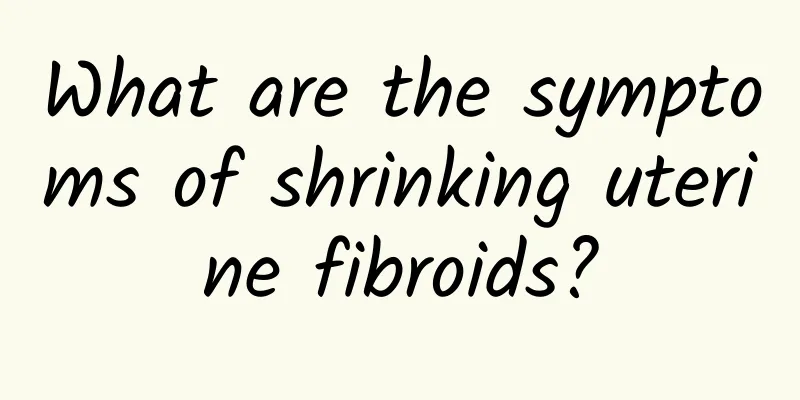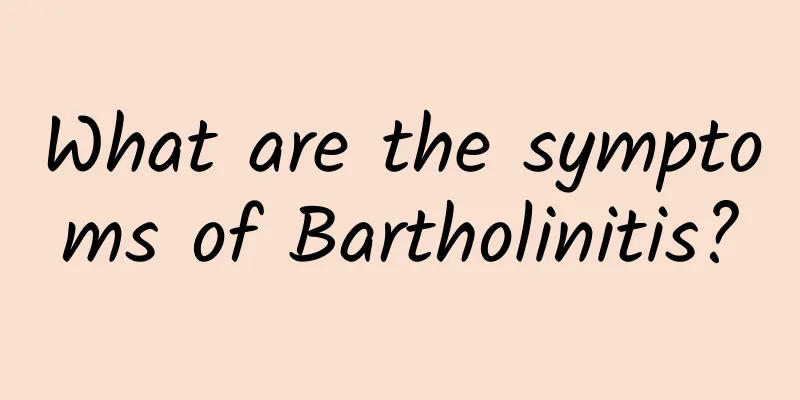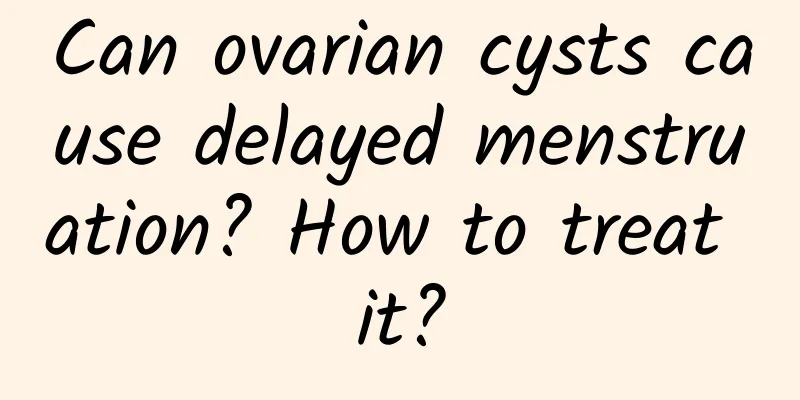What are the symptoms of shrinking uterine fibroids?

|
Uterine fibroids are a common gynecological disease that can cause irregular menstruation, pelvic pain, and infertility. There are many treatments for uterine fibroids, one of which is to shrink them through medication or surgery. So, what happens when uterine fibroids shrink? This article will answer this question for you. 1. Understand the reasons for the reduction of uterine fibroids Uterine fibroids are generally benign tumors formed by the overgrowth of uterine smooth muscle cells. They can be reduced through drug treatment or surgery. Drug treatment usually uses progesterone, gonadotropin-releasing hormone drugs or drugs with anti-estrogen effects, which can reduce the size of uterine fibroids by inhibiting the secretion of estrogen. Surgical treatment includes removal of uterine fibroids, hysterectomy, etc. 2. Response to shrinkage of uterine fibroids When uterine fibroids shrink, patients often experience a series of reactions. First, the pain is reduced or disappears. The growth of uterine fibroids can cause severe pain to patients, especially during menstruation. As uterine fibroids shrink, the pressure on surrounding organs and nerves is reduced, and the pain is also reduced accordingly. 3. Improvement of irregular menstruation Uterine fibroids can cause irregular menstruation, which can manifest as heavier menstrual flow and longer periods. These irregular symptoms will gradually subside as the fibroids shrink. As the tumors shrink, the blood supply to the endometrium will also improve, and menstruation will become more regular. 4. Disappearance of cysts Some uterine fibroids can form cysts, which are usually caused by the death of muscle cells inside the mass. When the uterine fibroids shrink, the cysts will gradually disappear. This is good news for patients because cysts can cause pelvic pain and other discomfort. 5. Time for uterine fibroids to shrink It usually takes some time for uterine fibroids to shrink. The specific time varies depending on the treatment method and individual differences. Generally speaking, drug treatment takes several months, while surgical treatment may take longer. Therefore, patients need to be patient and have regular checkups during treatment to monitor changes in uterine fibroids. Summarize: The effects of shrinking uterine fibroids include less pain, improved menstrual irregularities, and disappearance of cysts. Patients need to understand the reasons for shrinking uterine fibroids and clarify the treatment method and time. If you suspect you have uterine fibroids, it is recommended to consult a doctor as soon as possible so that a suitable treatment plan can be developed. |
Recommend
Is Bartholinitis contagious during the incubation period?
Bartholinitis is a gynecological disease caused b...
What are the symptoms of pelvic peritonitis?
What are the symptoms of pelvic peritonitis? This...
What are the treatments for uterine fibroids? How to treat uterine fibroids with drugs
Uterine fibroids are common conscientious tumors ...
Can I get pregnant with endometrial hyperplasia?
Can you get pregnant with endometrial hyperplasia...
Does dysmenorrhea need treatment?
Does dysmenorrhea need treatment? 1. Dysmenorrhea...
Will menstruation be normal after cervical adhesion surgery?
After uterine adhesion surgery, we have a lot of ...
3 ways to avoid being a belly lady and lose weight at the office
White-collar women sit in the office for a long t...
Night owls are prone to obesity and urticaria! Chinese medicine doctor Huang Huijuan: Drink slimming tea to reduce edema
For night owls, staying up late for a long time w...
British man lost 108kg after becoming unemployed due to obesity
Losing a job because of being too fat may sound u...
Eating sandwiches for breakfast is nutritious and healthy! Add 5 weight-loss-promoting fillings, so you won’t get fat after eating
It is a common habit for people to eat sandwiches...
My period was a week late
My period was a week late A week late menstruatio...
Is chronic cervicitis serious?
Chronic cervicitis is not usually considered a se...
How to treat chronic cervicitis? 5 methods can effectively prevent chronic cervicitis
Can I take amoxicillin to reduce inflammation in ...
Are uterine fibroids serious?
Uterine fibroids are a type of uterine fibroids t...
A large waistline is actually related to a crooked pelvis! Chinese medicine doctor Zhang Ruowei: 3 tips to slim waist easily
Many women are keen on body shaping and weight lo...









